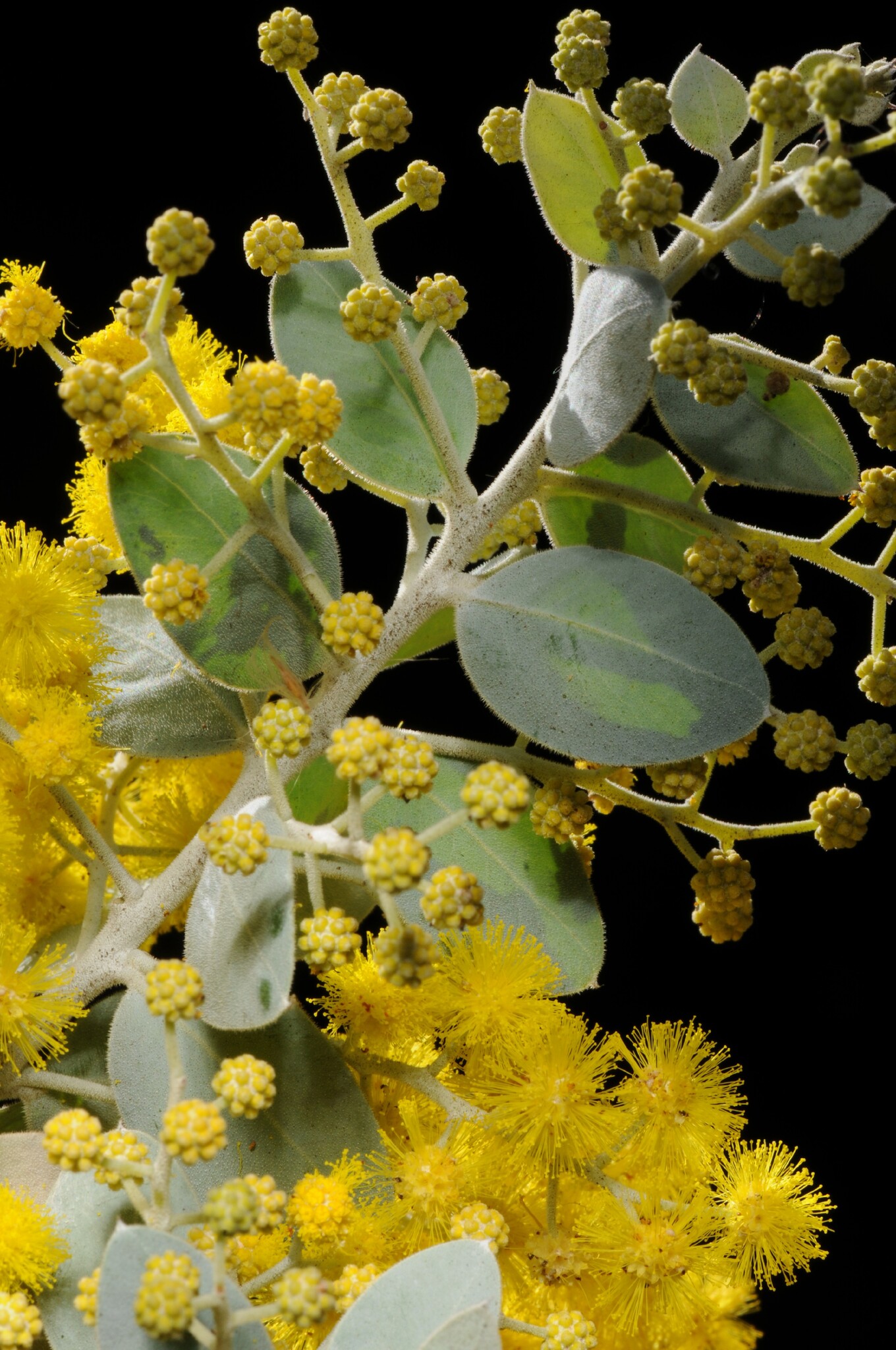
Greek akis — sharp point. Aboriginal name for the flower — barreenong; the tree — brigalow, namoi,wirha.
Trees or shrubs, sometimes spiny, a few are climbers. Leaves either bipinnate or reduced to phyllodes (modified leaf stalks assuming the form and function of a leaf), occasionally absent; stipules 2, often soon shed, occasionally spiny. In bipinnate leaves the first-order leaf divisions are referred to as pinnae and the finer divisions as pinnules or leaflets. Flower heads spherical or cylindrical, mostly stalked and axillary, solitary or paired, consisting of numerous flowers. Flowers small, mostly bisexual, sepals and petals 4-5, free or united. Stamens 5,10 or numerous, free, protruding. Fruit pods extremely variable, dehiscent. A vast and economically important genus. African species are mostly spiny while only a few Australian species have small spines.
Many acacias are available in nurseries but the species available vary significantly from year to year. Only the more common species are illustrated and described here. In view of the variable range of species grown, an attempted key to all cultivated species would be large and confusing. In the descriptions several similar species are often placed together with brief diagnostic descriptions. However, it is hoped that the key given here for commonly grown large shrubs and small trees may be helpful. Excellent identification guides to the wattles of individual states are cited in the literature and specialist books should be consulted for difficult cases. A computer key to all species is available (contact Perth Herbarium).
About 1200 species in the tropics and subtropics, chiefly Africa and Australia. Australia has about 900 widespread species that are prominent in arid and semi-arid regions.
Seed.
Many species are used for fuel, forage, timber (sometimes fragrant), a few as the source of gums (A. senegal (L.) Willd., Gum Arabic, used in sweets etc., A. catechu (L. f.) Willd., Catechu or Cutch, is chewed with betel), tannins, dyes, medicines and scents (A. farnesiana (L.) Willd. is the source of an essential oil, cassie ancienne, used in perfumery).
Flowers in yellow balls or rods.
300 species in the wattle garden at Mt Annan Bot. Gds, NSW.
Armitage (1978), Maslin (1978), Pedley (1978, 1979), Symon (1992), Tame (1992).
Source: (2002). Mimosaceae. In: . Horticultural Flora of South-eastern Australia. Volume 3. Flowering plants. Dicotyledons. Part 2. The identification of garden and cultivated plants. University of New South Wales Press.
